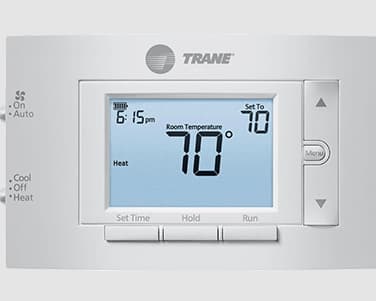Imagine a world where you can travel abroad without worrying about changing your SIM card or paying exorbitant roaming charges.
Welcome to the era of eSIM technology! This innovative solution is transforming the way we stay connected while globetrotting.
How eSIM Technology is Transforming Travel Connectivity?

In this article, we’ll dive into the exciting world of eSIM, exploring its benefits, how it works, and what the future holds for this game-changing technology.
What is eSIM?
- eSIM stands for “embedded SIM”.
- It’s a small chip built directly into your device.
- No need for a physical, removable SIM card.
- Can store multiple network profiles, allowing easy switching between carriers.
The Traveler’s Dream: eSIM Advantages
- No more SIM card swapping: With eSIM, you can switch between networks without physically changing your SIM card.
- Cost-effective: Say goodbye to expensive roaming fees! eSim in UK or any other country allows you to connect to local networks at affordable rates.
- Convenient: Setting up an eSIM is quick and easy, often done through a simple app or QR code scan.
- Multiple profiles: eSIM can store several network profiles, making it perfect for frequent travelers or those with dual-SIM needs.
| Traditional SIM | eSIM |
|---|---|
| Physical card | Embedded chip |
| Single network | Multiple networks |
| Manual swapping | Easy switching |
| Limited flexibility | High flexibility |
How Does eSIM Work?
At the heart of eSIM technology is a concept called “remote SIM provisioning.” Here’s a step-by-step breakdown:
- Your device contains a small, programmable eSIM chip.
- You choose a carrier that supports eSIM.
- The carrier sends a unique profile to your device over the air.
- Your eSIM downloads and installs the profile.
- You’re ready to connect to the carrier’s network!
Setting Up eSIM:
A Piece of Cake Getting started with eSIM is surprisingly simple. Just follow these steps:
- Check if your device supports eSIM.
- Find a carrier that offers eSIM services.
- Download the carrier’s app or visit their website.
- Scan the provided QR code or enter the activation code.
- Wait for the profile to install, and you’re good to go!
eSIM and the Telecom Industry The rise of eSIM is shaking up the telecom world. As more devices adopt this technology, carriers are shifting their focus to digital services and flexibility. This change is driving innovation and competition, ultimately benefiting consumers with better offerings and prices.
Challenges and Considerations
While eSIM is undeniably exciting, it’s not without its challenges:
- Security concerns: As with any new technology, ensuring data privacy and security is crucial.
- Compatibility: Not all devices support eSIM yet, and carrier adoption varies by region.
- Consumer awareness: Many people are still unfamiliar with eSIM and its benefits.
However, the industry is working hard to address these issues and make eSIM accessible to everyone.
eSIM vs. Physical SIM:
Greener Connectivity In addition to convenience, eSIM offers environmental benefits over traditional SIM cards:
- Reduced plastic waste: eSIMs eliminate the need for physical SIM cards and their packaging.
- Longer device lifespan: With eSIM, you can keep your device longer without worrying about SIM card compatibility.
- Lower carbon footprint: Less production and transportation of physical SIMs mean a smaller environmental impact.
eSIM Beyond Phones:
Wearables and More eSIM isn’t just for smartphones!
This technology is making its way into various devices, including:
- Smartwatches
- Fitness trackers
- Tablets
- Connected cars
- Smart home devices
With eSIM, these devices can connect to networks independently, opening up exciting possibilities for the Internet of Things (IoT).
The Future of eSIM As eSIM Technology Evolves, We can expect:
- More widespread adoption by carriers and device manufacturers.
- Seamless global connectivity for travelers.
- Innovative eSIM-based services and offerings.
- Greater integration with IoT devices.
- Improved security and privacy features.
FAQs:
- Can I use eSIM with my current carrier?
Many carriers worldwide now support eSIM, but it’s best to check with your specific carrier for compatibility.
- Do I need a special device for eSIM?
Yes, your device must be eSIM-compatible. Many newer smartphones, smartwatches, and tablets support eSIM, but it’s important to check your device’s specifications.
- Is eSIM secure?
eSIM technology is designed with security in mind, using encryption and secure protocols to protect your data. However, as with any technology, it’s crucial to take precautions and follow best practices for digital security.
- Can I have both an eSIM and a physical SIM on my device?
Yes, many devices support dual-SIM functionality, allowing you to use both an eSIM and a physical SIM simultaneously.
- Will eSIM completely replace physical SIMs?
While eSIM is gaining popularity, the transition from physical SIMs will likely be gradual. Many carriers and devices still support physical SIMs, and it may take time for eSIM to become the universal standard.
Also Check:
- How to Find Out Who Keeps Calling Me
- How To Record Phone Calls On Your Mobile Phone
- How to Know if Someone Blocked Your Number Without Calling
- Best Spy Dialer Alternatives
Conclusion:
The eSIM revolution is here, and it’s transforming the way we stay connected, especially while traveling.
With its convenience, flexibility, and environmental benefits, eSIM is set to become the new standard in mobile connectivity.
As the technology continues to evolve and more devices adopt eSIM, we can look forward to a future where staying connected is simpler, smarter, and more sustainable than ever before.



